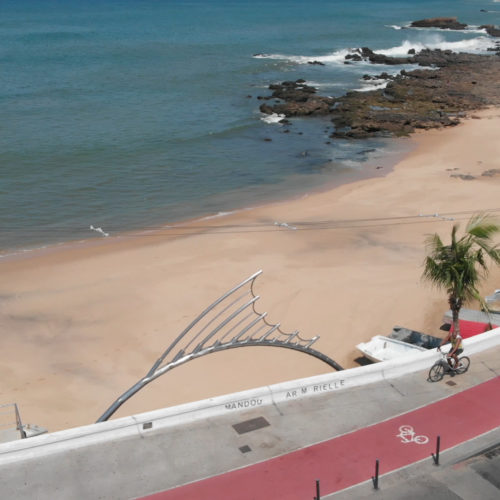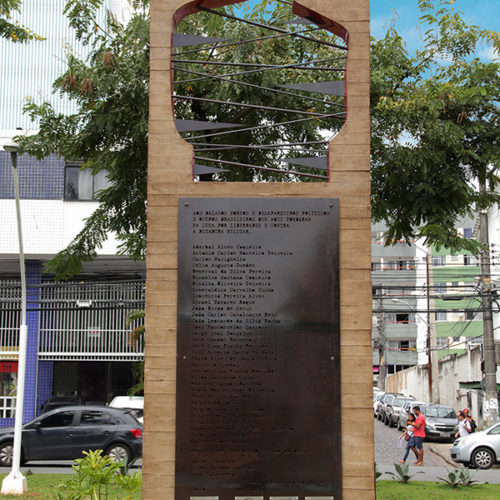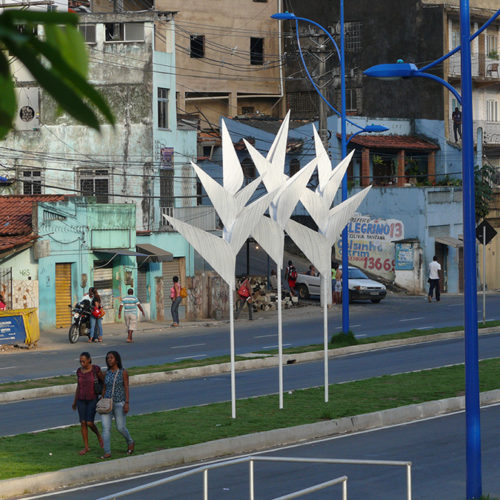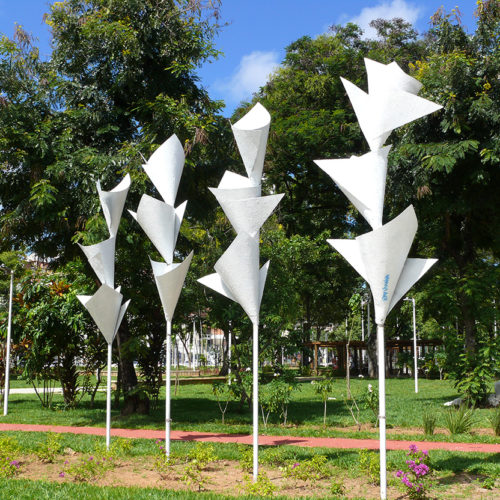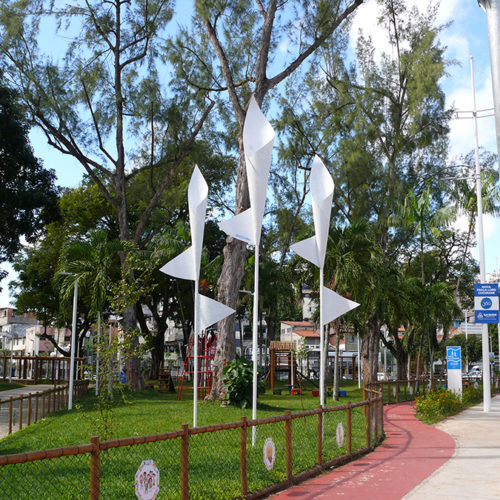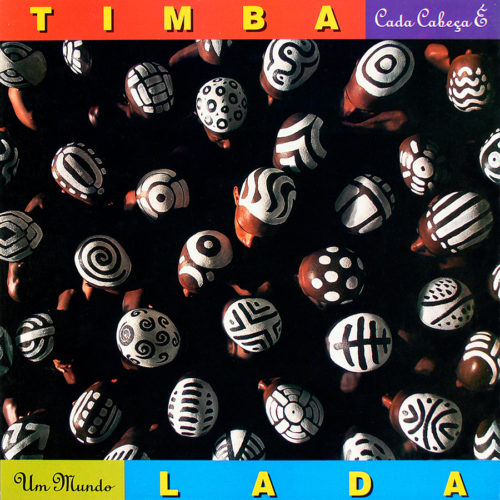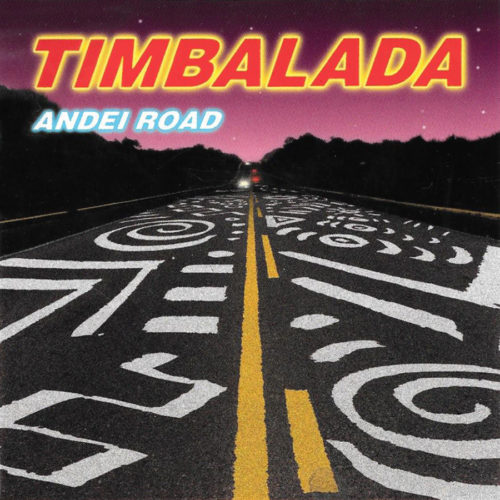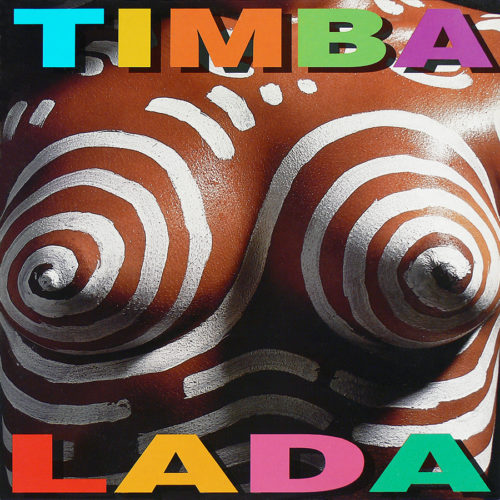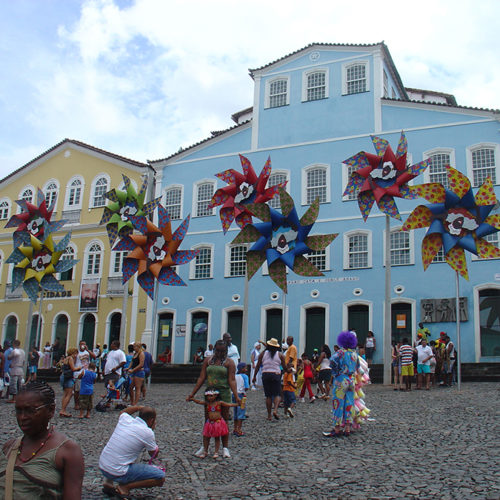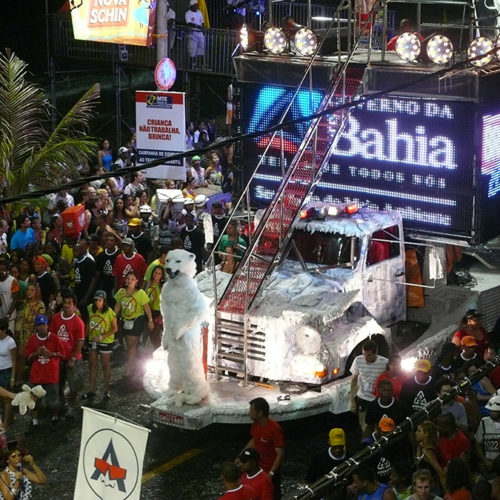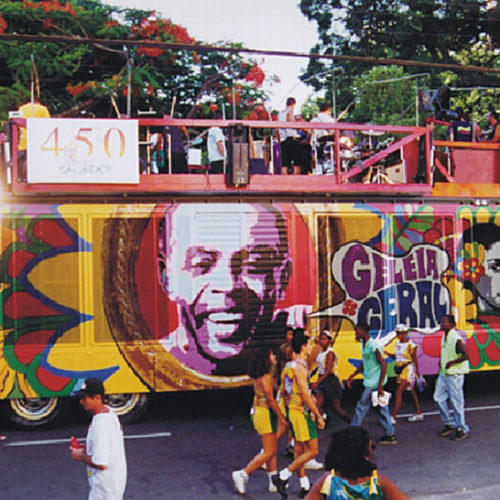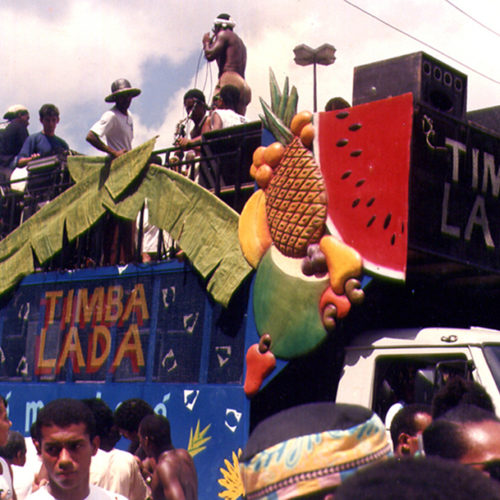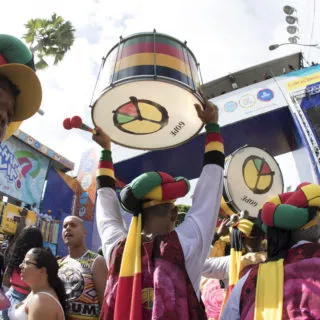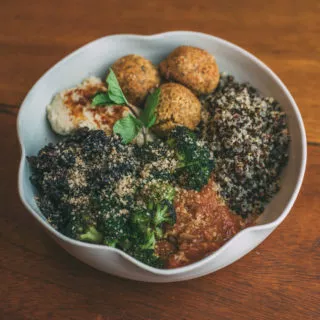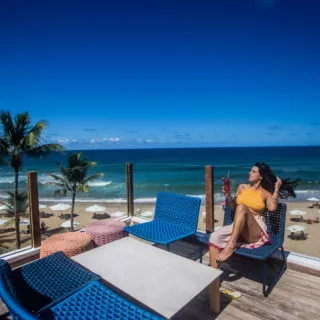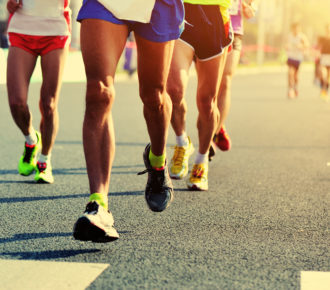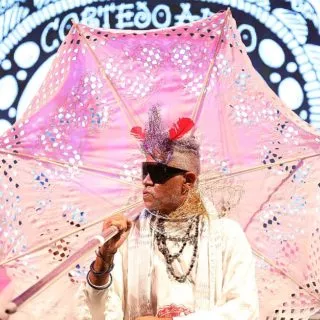
Works of art in the public areas of Salvador and its curiosities.
It was the beginning of the 90’s and the band Timbalada was preparing for a great show in Salvador. A day before, a problem in the costume gave rise to what ended up becoming one of the symbols of the musicians of the Candeal: the body painting with white tribal drawing. The first painted body was Pintado do Bongô’ body, Master of Carlinhos Brown, reference of the Brazilian contemporary percussion. From that day on, the painted bodies became the signature of Timbalada.
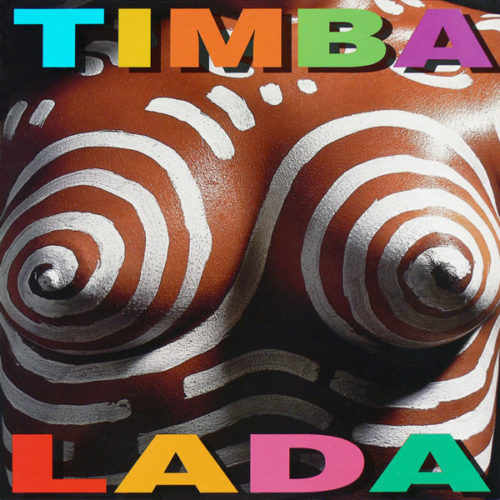
Photo: Cover icon of TIMBALADA of 1993. Ray Vianna in partnership with David Glat. Design for LP, CD and Tape K7.
The story told with affection by Ray Vianna contextualizes much the creative universe of his works, which mixes with the Bahian carnival itself. Visual artist, designer and set designer, it was the visual identity of Timbalada that generated the tribal painting that ran the world – in addition, he is the author of many covers of the group, trios elétricos (electric trucks), Abadás (carnival uniforms), Scenarios, etc. Ray has produced for artists and blocks (carnival formal groups of people) such as Ivete Sangalo, Carlinhos Brown, Netinho and Margareth Menezes, Gilberto Gil among others and he also has already signed the decoration of Pelourinho carnival for some years, along with the artist João Teixeira.
Ray Vianna has works in decoration of environments, urban interventions and in the plastic arts. Walking through Salvador is easy to cross with its facilities. This script takes a walk around the city showing the work of this artist, one of the great names of public art soteropolitana. You’ve probably gone through a lot of them, but you never knew the stories behind that creation. Let’s go?!
Odoyá, 2008, in Largo de Santana (Santana Square), in Rio Vermelho.
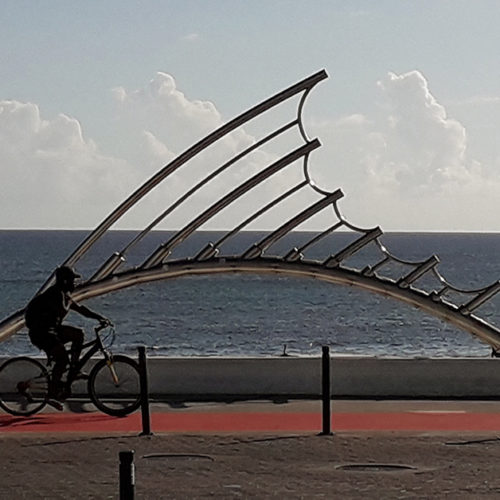
The Odoyá sculpture stands on the edge of Santana beach, in Rio Vermelho district, in front of Largo da Dinha (Dinha Square). This was Ray’s first deepest plunge into public art. It is near the Casa de Iemanjá (House of Iemanjá), it is made of stainless steel and people constantly stop to photograph it at sunset. It has become an icon of the neighborhood, turning a date of celebration with the already traditional Lavagem de Odoyá (Wash of Odoyá), celebrated every year with a lot of music.
Series “Flores Urbanas” “Urban Flowers”
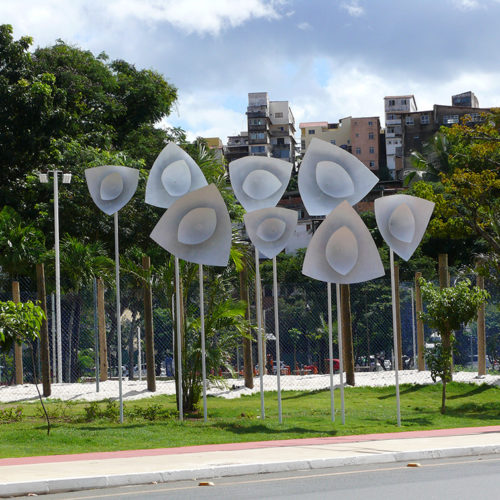
Giant, but still delicate, you’ve certainly gone through those white flowers made of fiberglass. In Largo da Garibaldi (Garibaldi Square): there are three groups of giant flowers, the Tulips (2012), the Valentinas and the Altivas (2018) – the latter positioned with the work of requalification of the Square. Thus, the sets follow the 3 flows of the cars: a view of the cars coming from Vasco da Gama Avenue, another one for those coming from Garibaldi Avenue, and the other for those who go towards Garcia or Vale do Canela (Canela Valley). Another set of giant flowers is in the central flowerbed of the Avenue Vasco na Gama, the Helicônicas (2013).
“It all starts with an experiment of folding papers, small geometric shapes that, as they are contorted, they form curves and I see flowers, always in motion, as if in the wind, blossoming, each group with its personality,” explains Ray Vianna.
Caramuru Guaçu, of 2015 at Piatã Beach.
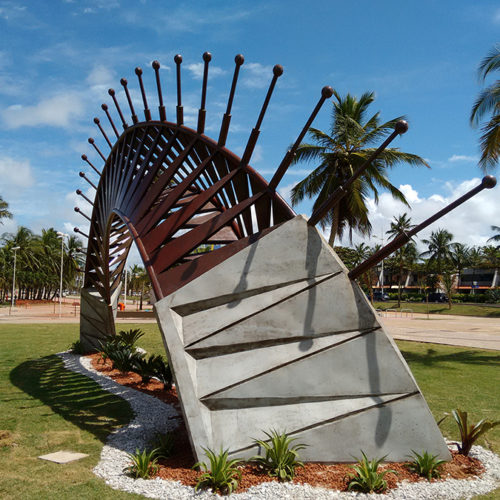
The revitalization of the border in the stretches of Itapuã and Piatã enabled the restoration of old and installation of new works of art, under the coordination of the Gregório de Mattos Foundation (FGM). It was then that Piatã won a sculpture of Ray Vianna, 14 meters long and 7 meters high, named Caramuru-Guaçu.
The work is a prehistoric fish of corten steel and concrete that causes a lot of curiosity. Caramuru-Guaçu – in Tupinambá, “Large Moray” – was inspired by this “serpent fish” found in Brazilian waters. The result is a sculpture that seems to be moving. The concrete part transforms itself into cast metal, which, even with these two heavy materials, contorts with fluidity and integrates with the landscape.
Tortura, 2015, at Largo do Campo da Pólvora (Campo da Pólvora Square), in Nazaré district.
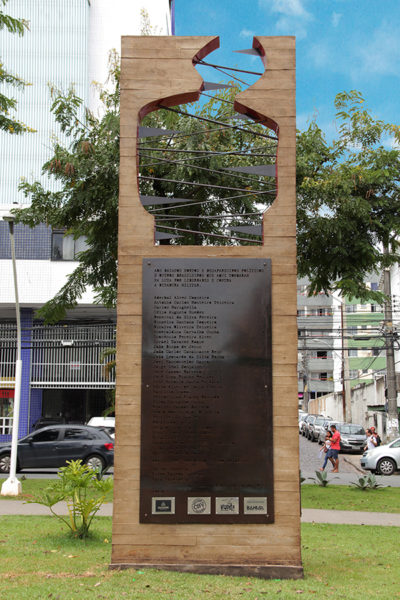
A monument with the words “Homage to the dead and missing Bahians and other Brazilians” who have fallen here in the struggle for freedom and against dictatorship.” The work of Bahian plastic artist Ray Vianna, has a plaque with the name of 32 Bahians who fought during the dictatorship and represents the continuity of the struggle for freedom.
Learn more about the artist and his creations at this link.
We’ve prepared a perfect playlist for this experience. Listen now!

